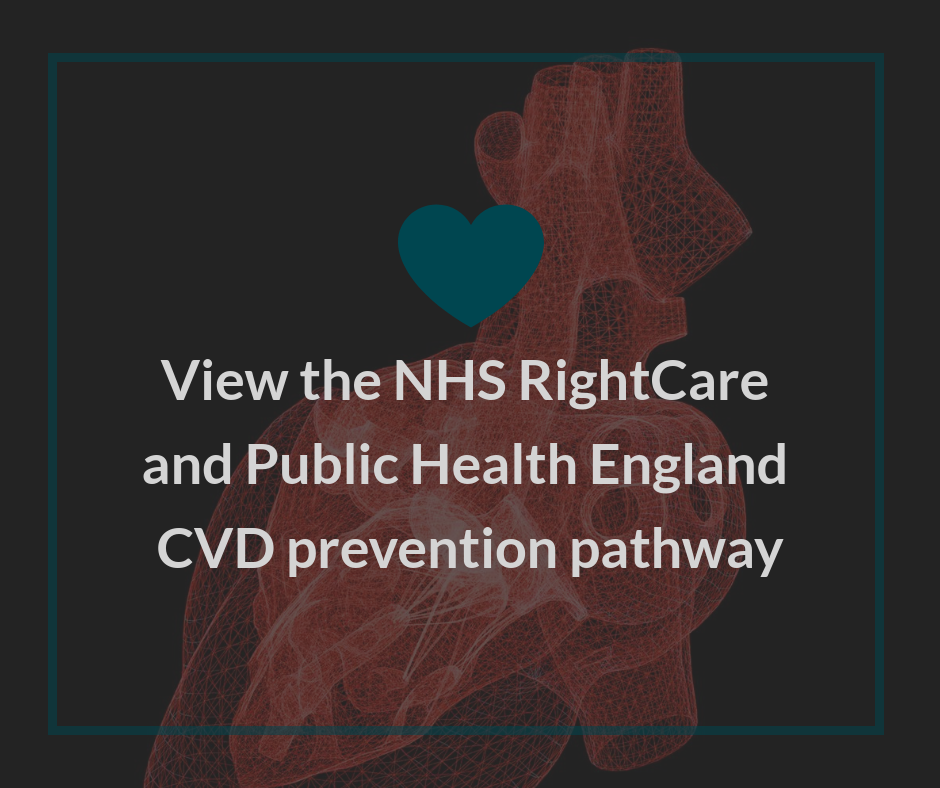CVD prevention: preventing, detecting and managing diabetes
How NICE resources can support local priorities

Making the case for action
Around 5 million people in England have non-diabetic hyperglycaemia and are at risk of developing type 2 diabetes. Most of these people are undiagnosed. But intensive interventions to change people’s behaviour reduce the risk by 30 to 60%.
In people registered with a GP in England in 2020, the risk of death in hospital with COVID-19 was strongly associated with both type 1 and type 2 diabetes.
The NHS Long Term Plan includes a commitment to expand the NHS diabetes prevention programme so that it supports 200,000 people at high risk of type 2 diabetes each year. The plan also commits to reducing variation in access to footcare and specialist nursing teams.
We've published guidance and quality standards on preventing type 2 diabetes and managing type 1 and type 2 diabetes, and tools to help with putting them into practice. Our guidance is aligned with the NHS England RightCare and Public Health England cardiovascular disease (CVD) prevention pathway and will support delivery of the NHS Long Term Plan.
Use data about your area
Getting data on what’s happening in your area helps you compare how you're doing with other areas, and make decisions on how to improve care. These resources from Public Health England and RightCare include data on cardiovascular disease, including diabetes:
- CVD primary care intelligence packs look at prevention, diagnosis, care and outcomes and allow for comparison between clinical commissioning groups (CCGs) and between GP practices.
- PHE's cardiovascular disease profiles for each CCG cover coronary heart disease, diabetes, kidney disease and stroke.
- RightCare's ‘where to look' packs include headline opportunities, improvement opportunity tables and pathways on a page showing how CCGs in each sustainability and local area differ from their peers.
Dr Matt Kearney, Programme Director for UCLPartners AHSN and former National Clinical Director for CVD Prevention (2016-2019), explains how we can help you tackle CVD in your area.

Finding the right information

The easiest way of finding our products on diabetes prevention, detection and treatment is to go to our topic page on diabetes.
Prevention

Our guideline on type 2 diabetes: prevention in people at high risk contains recommendations on identifying people at risk and giving advice to help them change their lifestyle. Behaviour change: general approaches has recommendations on setting up behaviour change programmes, including training for health and social care practitioners.
For recommendations on prevention in populations and communities at high risk, see type 2 diabetes prevention: population and community-level interventions.
These quality standards include quality statements that will help you identify ways to improve type 2 diabetes prevention locally:
NICE Pathways
For prevention

NICE Pathways are interactive flowcharts showing how all our guidance and advice on a topic fit together. The main pathways relevant for preventing type 2 diabetes are:
- preventing type 2 diabetes, which covers specific interventions
- behaviour change, which includes recommendations on setting up behaviour change programmes
- obesity, which covers preventing, identifying and managing obesity.
Detection and management

The following guidelines support improvements in detecting and managing diabetes:
- type 1 diabetes in adults
- type 2 diabetes in adults
- diabetic foot problems
- diabetes (type 1 and type 2) in children and young people
- diabetes in pregnancy.
Our quality standards on diabetes in adults and diabetes in children and young people help you identify priority areas for improvement and measure progress. See how to use quality standards for more information.
The guidance listed below may help with adopting clinically and cost-effective technologies rapidly and consistently.
Medical technologies guidance covering new and innovative medical devices and diagnostic tools:
- Debrisoft monofilament debridement pad for use in acute or chronic wounds
- VibraTip for testing vibration perception to detect diabetic peripheral neuropathy
- Neuropad for detecting preclinical diabetic peripheral neuropathy
- UrgoStart for treating diabetic foot ulcers and leg ulcers.
Diagnostics guidance covering new and innovative diagnostic technology:
Medtech innovation briefings with objective information on device and diagnostic technologies to aid local decision-making:
- Aptiva for painful diabetic neuropathy
- FreeStyle Libre for glucose monitoring
- MiniMed 640G system with Smart Guard for managing blood glucose levels in people with type 1 diabetes
- AI technologies for detecting diabetic retinopathy
- 3C Patch System for treating diabetic foot ulcers
- t:slim X2 insulin pump for managing blood glucose levels in type 1 diabetes
- NATROX oxygen wound therapy for managing diabetic foot ulcers and complex or chronic non-healing wounds
- Noctura 400 Sleep Mask for diabetic retinopathy and diabetic macular oedema
- Health app: GDm-Health for people with gestational diabetes.
Key therapeutic topics summarising the evidence base to support medicines optimisation:
NICE Pathways
For detection and management

NICE Pathways are interactive flowcharts showing how all our guidance and advice on a topic fit together. There are several Pathways that relate to detecting and treating diabetes:
- type 1 diabetes in adults
- type 2 diabetes in adults
- foot care for people with diabetes
- diabetes in children and young people
- diabetes in pregnancy.
The following video explains how to use NICE Pathways.
Support for improving quality


We publish a range of tools and resources to help you use our guidance and quality standards to improve diabetes prevention and management.
You can find these on the ‘Tools and resources’ tab for any guidance (such as preventing type 2 diabetes: prevention in people at high risk and type 1 diabetes in adults: diagnosis and management).
Useful tools include:
- Shared learning case studies showing how organisations have used our guidance and standards to improve the quality of services around the UK. There are some particularly useful examples for diabetes and behaviour change: individual approaches.
- A patient decision aid to help adults with type 2 diabetes consider options for controlling blood glucose.
- An algorithm for blood glucose lowering in adults with type 2 diabetes.
Our impact report on CVD prevention highlights the progress made by the healthcare system by implementing NICE guidance.
NICE indicators
We’ve developed a set of outcome indicators for diabetes. Visit our single menu of indicators and select diabetes from the ‘filter by subject’ dropdown menu.
Indicators can be particularly useful to integrated care systems when:
- creating local performance dashboards
- benchmarking performance against national data
- developing local quality improvement scheme
- measuring progress that local health systems are making on outcomes.

Endorsed tools
NICE has endorsed these tools produced by other organisations as supporting our guidance:
- Introductory certificate in obesity, malnutrition and health: a learning package from the Royal College of General Practitioners that supports our recommendations and quality statements on identifying and classifying overweight and obesity and assessment and advice on physical activity.
- Mapmydiabetes: an online resource to enhance the self-management of diabetes.
- Optimising medicine for adults with type 2 diabetes: an e-learning course to support clinicians in implementing our guidelines and quality standards in relation to managing type 2 diabetes in adults.
- Wirral Care Homes: Supporting the Management of Residents with Diabetes (PDF) Diabetes policy for Wirral care homes supporting the management of residents with diabetes .
- Adult Type 1 Diabetes booklets: A resource pack to support adults newly diagnosed with type 1 diabetes to complement a structured education programme within specialist diabetes clinics (Nutrition and diet resources UK) .



